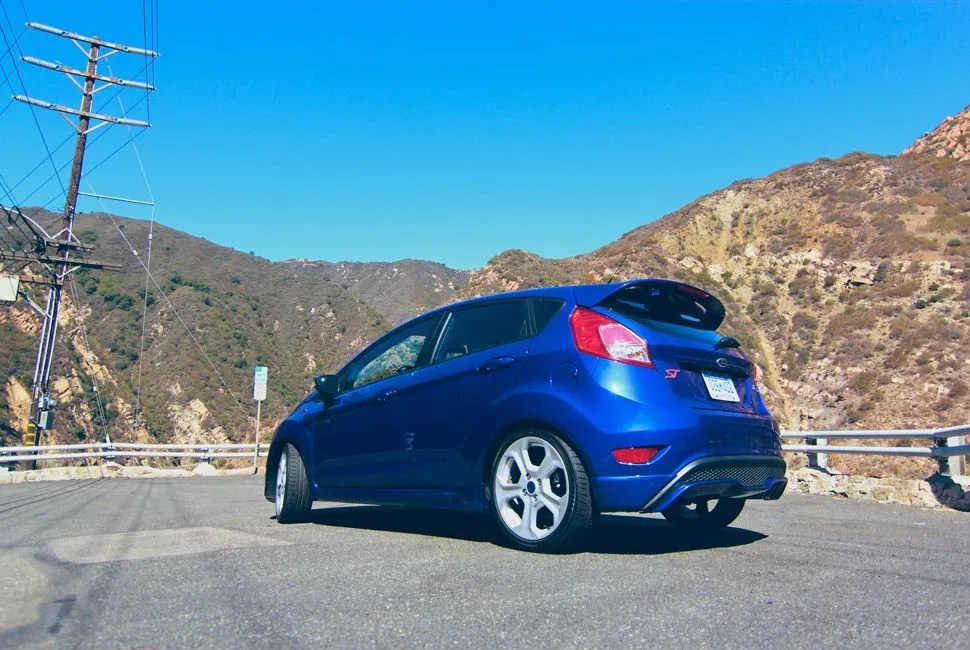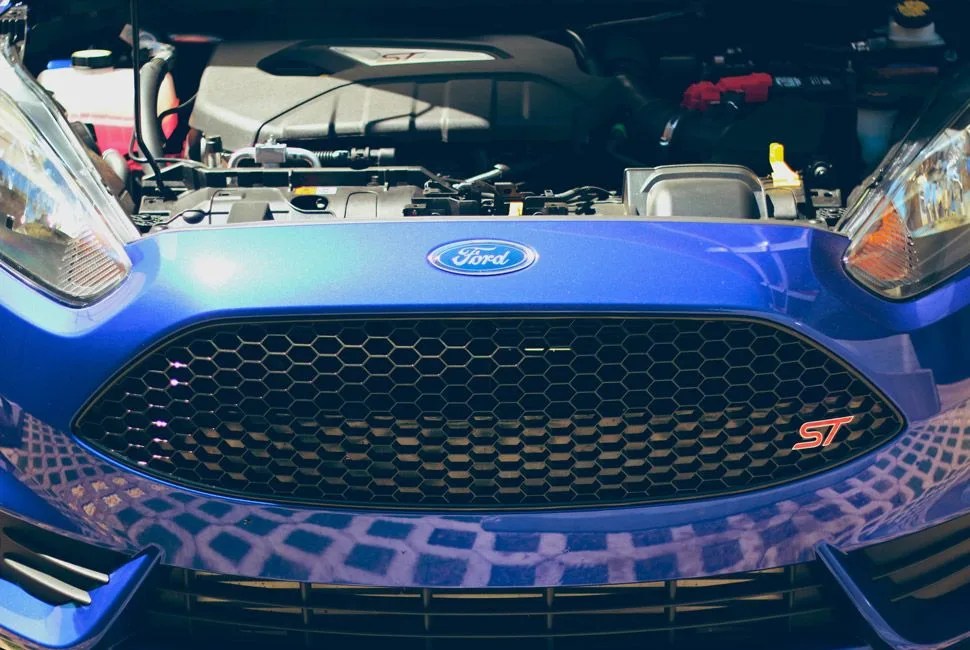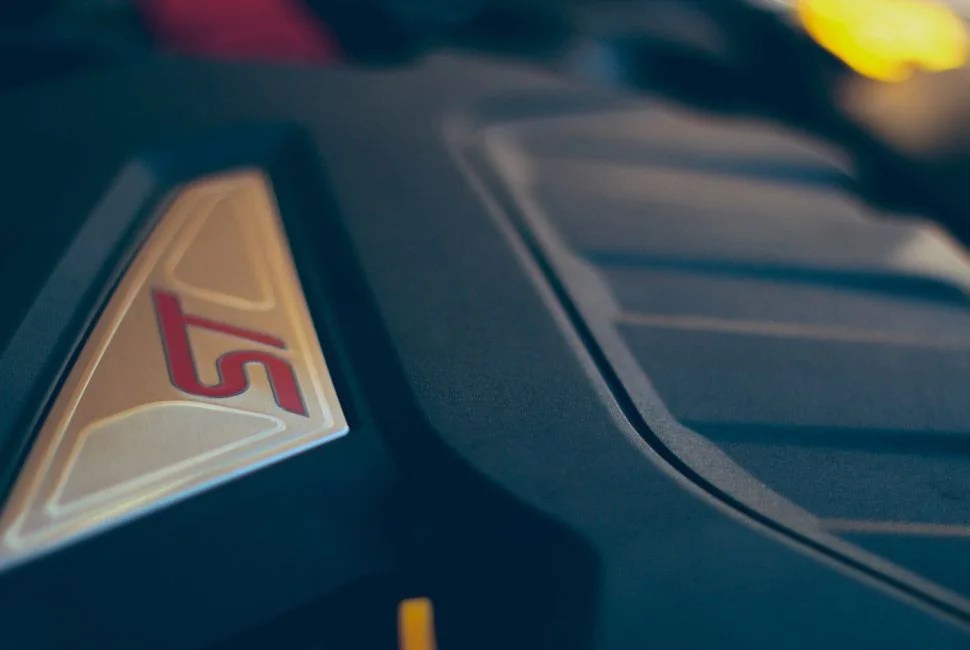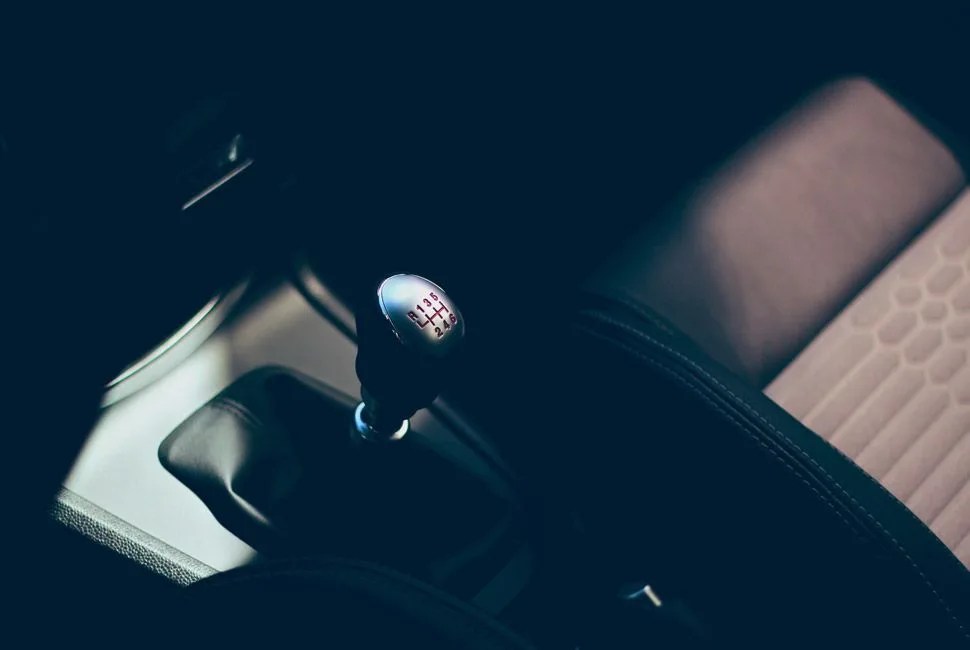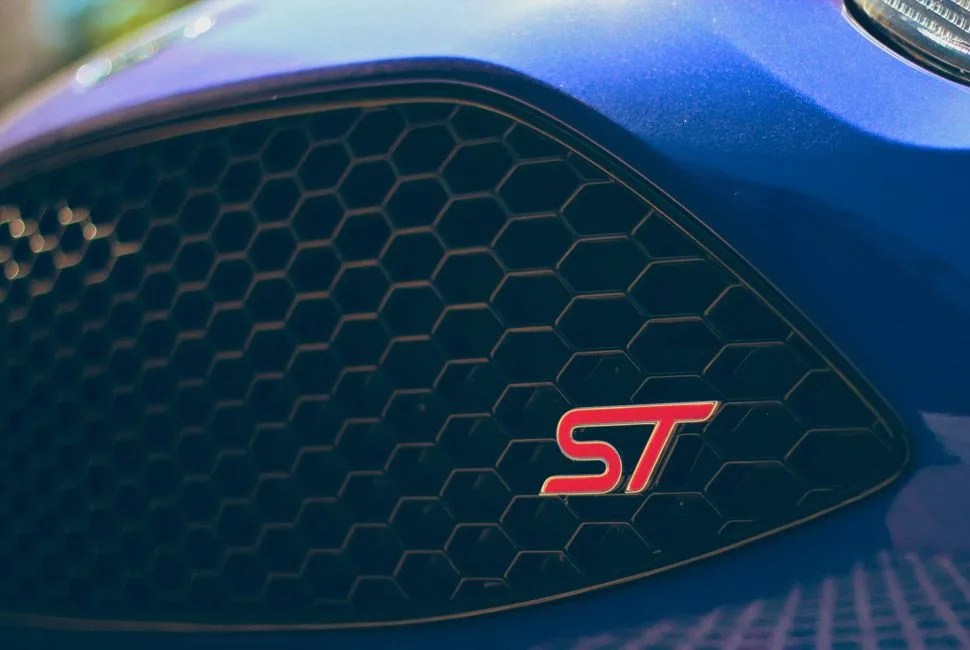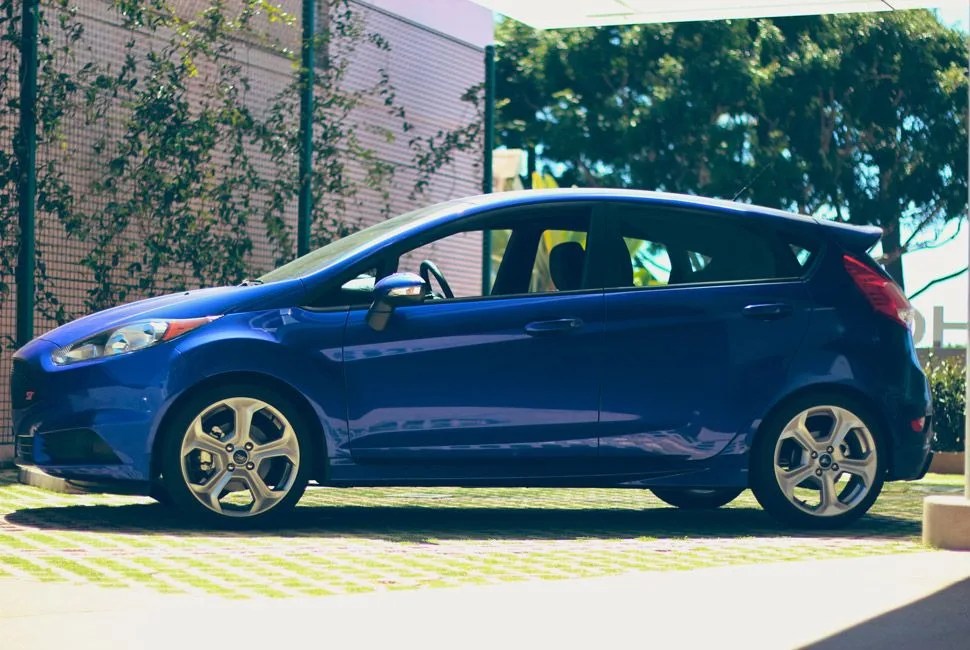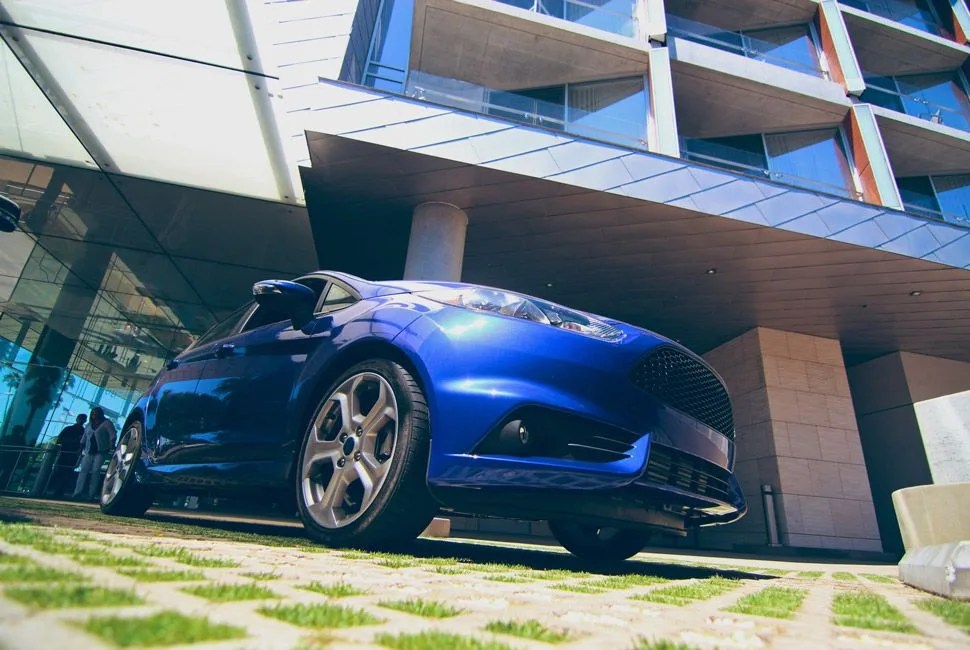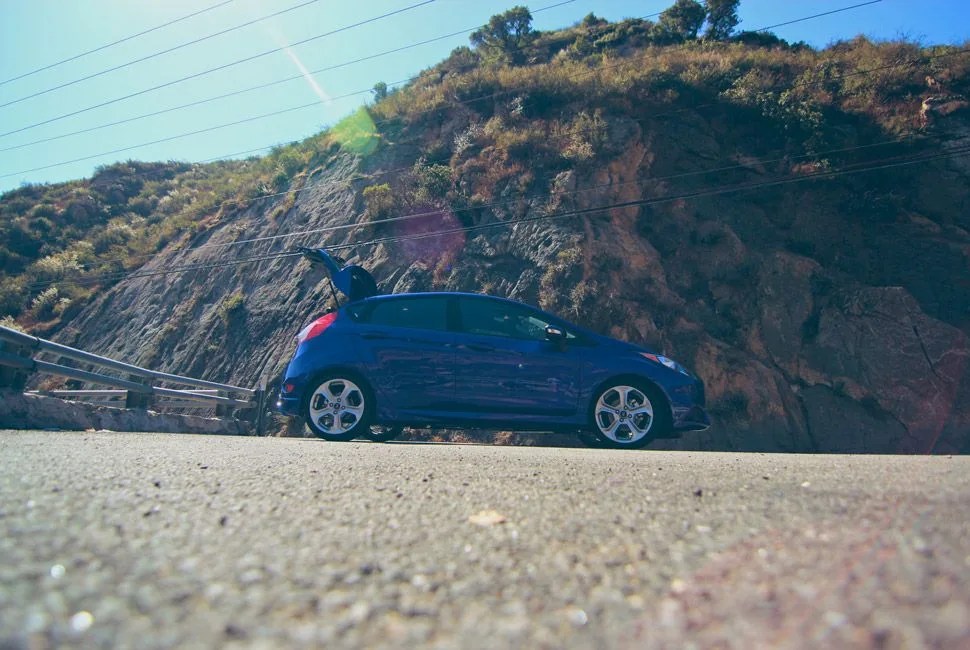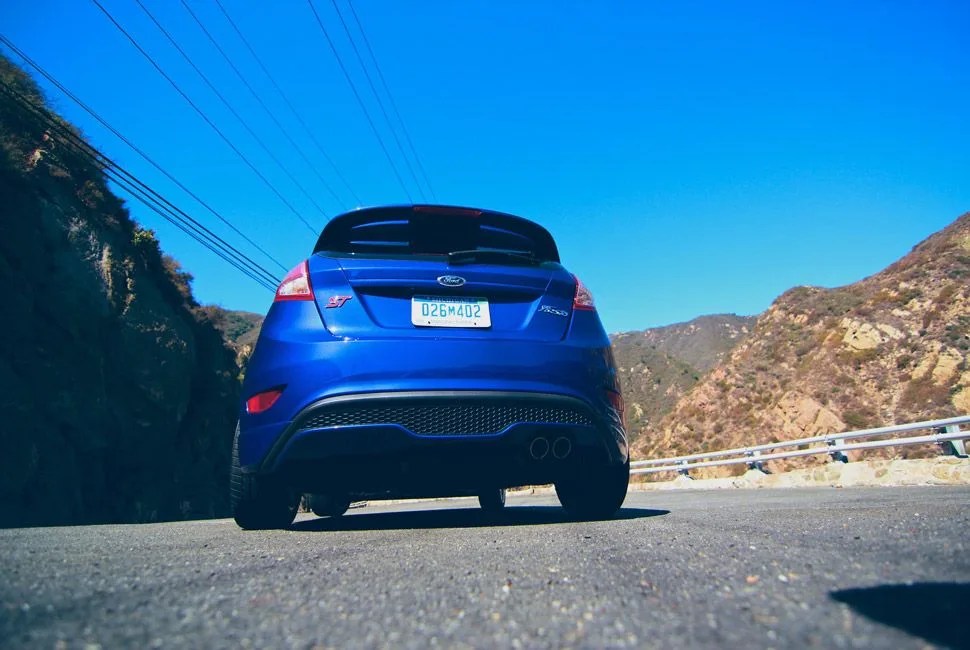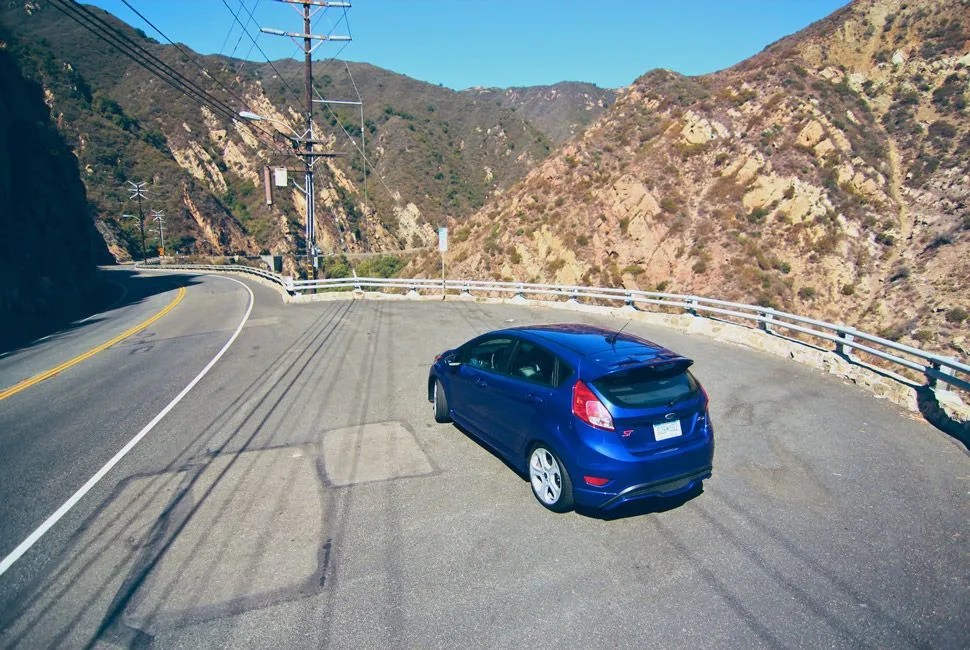15 photos
Though the Ford Fiesta (not to be confused with the midget-special Ford Festiva) has been around since 1976, it wasn’t available stateside until 2011. Back then, we enjoyed the original 1.6-liter 120 hp inline four cylinder hatch but longed for more pep. Obviously the engineers behind the Shelby GT500 and the F150 Raptor SVT follow Gear Patrol closely, because they answered our need for more zip with the 2014 Ford Fiesta ST ($22,000).
More Affordable Sports Cars: Quick Spin: Ford Focus ST | Behind The Wheel: Scion FR-S | Behind The Wheel: Fiat Abarth 500 Cabrio
Mesh grill, ST badging, side skirt, rear diffuser and spoiler: these were the racy-looking bits that immediately caught the eye on our “Spirit Blue” Fiesta ST. On the inside, the steering wheel has larger thumb pads, and the Recaros, which look like they may have been modeled after a svelte vegetarian, certainly signify a departure from the base Fiesta. Though the list of standard features only leaves room to upgrade the seats to partial-leather trimmed heated Recaros, by the end of our time brutally flinging the car around the area of Mulholland known as “The Snake”, we were happy to have the extra support.
The turbocharged 197 horsepower 1.6-liter EcoBoost engine fit nicely with the aggressive body kit add-ons, standard six-speed manual, 17-inch aluminum wheels, Torque Vectoring Control (TVC), sport suspension, bigger brakes, sport seats and dual exhaust with Sound Symposer. It quickly became clear that the only way to learn about this car was to make the brakes smoke. Sure, the straights were fun — the Sound Symposer piped a smooth, rugged exhaust note back into the cabin and all six gears felt egged on by the turbo — but it really shone in the blind curves and winding roads of LA’s canyons. The torque steer normally found in a front-wheel-drive turbo was controlled impressively by the TVC; though Ford used new front knuckles to quicken steering, the car did understeer a couple of times, forcing me to back off the throttle and brake harder into the turns.
Still, I was perhaps most impressed by how controllable the car became when the AdvanceTrac ESC was turned from Standard to OFF (Sport is a middle ground between control and interference). In this mode enabled I felt I could push the car to its stability limits and then simply break the tires loose by shifting my body weight into the curve. It didn’t feel as grounded as a Mini cooper, but it was arguably more fun and about $5,000 less expensive.
The ST is a blast to drive and entirely different from the base Fiesta. Paying for that upgrade gets you a daily driver (35 mpg highway!) that’s fun in the twisties and sounds like a WRX STI for roughly $22,000. This is one of the best cars America has to offer. I walked away from the Fiesta with a feeling Germans get to experience all the time but that’s more rare in the American automotive landscape: homeland pride.


